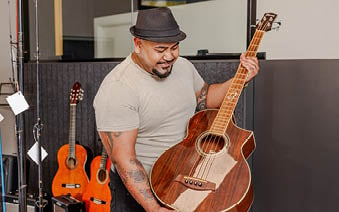When it comes to buying a car parts, where do you even start?
There are many reasons why you need car parts, and some parts are more popular than others. If you’re not familiar with car maintenance and modification, shopping for car parts may be challenging and even a little scary.
New car parts are also quite expensive, so the information below will help you understand what’s suitable with your budget and what’s good for your vehicle.
Don’t ever go in blind before buying. Be prepared and knock off a few of these must-dos so that you come out with the right part for your car.
Do you know your car’s VIN (Vehicle Identification Number)? It’s a long code that’s used to discover the model, year, and make of your vehicle along with specific factors like engine size and specifications. Why does this information help? Because it’ll give you what you need to get the exact part for your car.
You can easily find your VIN somewhere on the body of the car. Alternatively, it can be found via a vehicle search.
Every make/model of car will need something different. Just because your friend’s Skyline has a unique part doesn’t mean you can use it on your Toyota 86. Learn about what’s needed for the model of car you have.
For example, if you’re looking to buy oil filters or a cylinder head, not being sure about the exact one you need may end up costing you more.
Once you’ve figured this out, fill your head with knowledge about how to spot a good car part when you see one even if you’re shopping online. Good car parts aren’t always expensive, just look out for what’s most compatible with your vehicle.
Don’t be afraid to ask questions. Even if you’re a car lover it doesn’t mean you’re a mechanic.
Speak to a mechanic or someone you know who works in the automobile industry. Gather your sources and make a sound decision based on what you find.
A good reseller can make all the difference with the car part you choose. A good quality car part helps you ensure that your ride is, most importantly, safe on the road.
It’s great to look for a well-priced car part but don’t always try to find the cheapest option. If the store you’re looking at is an online one, visit online car forums or ask around about the business. Of course, Reddit is the biggest online forum but other communities like Car Talk and Automotive Forums provide great insights and resources about cars. There are even forum websites just for specific brands, like Nissan Club and Bimmerforums. Many Australians are now taking their shopping online when it comes to sourcing auto parts, so the right information should be out there.
Cash Converters has a selection of second-hand car parts that are great for those who have thoroughly researched what they’re after. When you figure out what you need, narrowing down an exact part is a whole lot easier.
While you might stumble on an expensive part that you feel is worth the asking price, make sure you’re not paying more than you should. When you tie this into finding a reputable seller, you’ll learn that a trusted seller will price fairly. After a few practice rounds and experience in the market you’ll start to tell the difference between what’s good and what’s not.
When you’ve checked off all the points above, it’s time to get into the nitty gritty of choosing which car part you want. First, start by understanding the three types of car parts in the market.
Original/OEM (Original Equipment Manufacturer)
These are parts directly from the brand/manufacturer your car is from. They’re brand new parts made just for your car model.
New Aftermarket parts (Generic parts)
These are new parts that don’t come from your car’s manufacturer, made by a third-party. Aftermarket parts aren’t designed specifically for your model of car, so the risk is a ‘one size fits all’ situation.
Used parts
These are car parts that have already been used, falling under either OEM or Aftermarket but in second-hand condition.
Remember this as you go: new isn’t always better and second-hand isn’t always the cheaper option. Regardless of whether it’s a new or used car part, the key is to figure out what’s right for your vehicle.
It goes without saying that newer means a fresh start. Not saying that second -hand car parts in Australia always come with wear and tear, but if you’re looking for assured performance and piece of mind, going for an aftermarket part might be more fitting. Buying an OEM would provide the least amount of risk, but with this in mind, new and direct from the manufacturer means it’ll be harder to find with a heftier price tag.
Some second-hand car parts cost less compared to the aftermarket and OEM ones, but you must look out for whether warranty is included. Warranties aren’t just limited to new auto parts; you may find used parts that come with a warranty guarantee. Be aware that no warranty guarantee is the same. It can depend on the make or model of your car, the seller you’re buying from, and the type of car part you’re looking for — these all play a part in what kind of warranty is available.
The best way to find out is to do your research and ask before you buy. If you opt for original parts, you’re most likely going to have the warranty come with it. Have a think about what type of warranty you’re looking for and what takes priority as warranties on used parts most likely won’t cover you for all.
Resellers and online retail stores like Cash Converters sometimes offer a warranty cover on select items. Make sure you ask and talk to the seller about any warranty covers for an item you’re interested in.
While you’re doing this, don’t forget to become familiar with the return policy as well.
Budgeting is always going to have a role in determining what you buy, especially when you’re adding the ongoing cost of owning a car to the mix.
The price of OEM and aftermarket parts are often higher than if you bought second-hand. Other factors like engine replacement costs in Australia, special fit outs done by a mechanic, and the rarity of what you’re looking for can rack it up even higher when you’re looking for a brand new part.
When we said second-hand doesn’t necessarily mean cheaper, we were really talking about cutting corners and going second-hand for the sake of it. Buying straight from a manufacturer will be more expensive given you’re getting all the factors of reliability, quality, and assurance. But if the make of your car needs a specific OEM part for guaranteed compatibility, going second-hand may cost you in the future if things go sideways.
Out of the three types of auto parts, you’re better off going for generic or used car parts if you’re in a hurry to replace something and you’re not set on compatibility assurance. Although you’re getting warranty guarantee, exact matching, and durability with OEM parts, the reality is that they’ll have less available for purchase and you may be put on a waiting list.
In some instances, if you’re upgrading an older model or modifying a classic, then second-hand might be the best way to go. The manufacturer itself may not be making parts for that particular model anymore — which means used auto parts are your best bet. Generally, OEM parts are available based on what’s current, just like accessories that go with the latest iPhone.
If your car isn’t in need of repair and you’re looking for accessories, second-hand can be a cheaper option than buying brand new – particularly if the accessory is in good nick.
You can find all sorts of accessories second-hand, from lights to dashcams and car jacks. The trick is to do your research and make sure you know exactly what you want, as some things might be best brand new.
No matter if you’re rolling up in a Hyundai or putting your 1998 Volkswagen Beetle to the test, finding the right car part comes down to doing plenty of research and knowing what your vehicle needs. There isn’t any reason why you shouldn’t buy a new car part or second-hand one because you’re scared of getting it wrong.
The most important thing is to have fun whilst getting lost in the process. Once you get your prized possession out on the road, wind down those windows and enjoy the ride.
The information contained in this blog is general advice only and does not take your specific circumstance into consideration. You should assess your own financial position, objectives, and requirements before making any financial decisions.
Australian Credit Licence 391436. Subject to lending criteria being assessed. Check our TMD.

Answering your questions about loans and staying savvy

Get more bang for your buck with these handy tips.

Need some advice that’s not about cash? We can help.